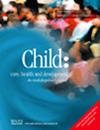Environmental Factors Linked to Birth Outcomes in Urban Localities Across Argentina
Abstract
Background
The impact of environmental factors on health is a key focus in public health research. More studies are needed to explore how environmental determinants influence birth outcomes. This study investigates the regional relationship between environmental conditions and birth outcomes in urban areas of Argentina during 2018–2019.
Methods
Data from 657 urban localities were analyzed. Prevalence rates of low birth weight (LBW), macrosomia, preterm births (PTB), and small for gestational age (SGA) births were calculated using data from the Health Statistics and Information Division. Environmental data were obtained from satellite sources. A principal component analysis with varimax rotation was applied to 22 environmental variables using Stata v15. The Kaiser–Meyer–Olkin (KMO) test evaluated sampling adequacy, and factor scores were calculated using regression analysis. Spatial distributions were mapped in QGIS 3.28, and clusters of environmental factors were identified through optimized hotspot analysis in ArcGIS Pro 3.2. Correlations between environmental factors and birth outcomes were assessed using correlograms in RStudio (p < 0.05).
Results
The spatial distribution of birth outcomes varied across the country. The analysis identified five factors, with a KMO score of 0.73. Spatial clustering was observed for all factors, with Pampeana and northern regions of Argentina showing the strongest adherence. Factor 1 (related to urban expansion) and Factor 3 (associated with high temperature) showed positive correlations with all birth outcomes. Factor 2 (favorable for vegetation) positively correlated with LBW and SGA births but negatively with macrosomia. Factor 4 (linked to extensive agriculture) was positively associated with LBW and PTB. Factor 5 (PM10 concentration) negatively correlated with macrosomia and SGA births.
Conclusion
This study provides new insights into environmental determinants of birth outcomes. Regional analysis of these factors is essential for evidence-based decision-making, particularly in climate change context.

 求助内容:
求助内容: 应助结果提醒方式:
应助结果提醒方式:


